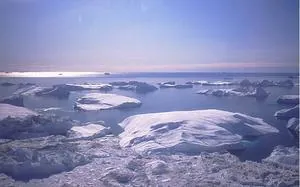
Remarkable Accuracy: Tulane Study Confirms 1990s Sea-Level Projections
2025-08-22
Author: Yu
For over three decades, satellites have been charting the ebb and flow of global sea levels, and a groundbreaking study from Tulane University reveals that climate projections made in the mid-1990s turned out to be astonishingly precise. This revelation unfolds in a recent article published in the journal Earth's Future.
Lead author Torbjörn Törnqvist, a distinguished Vokes Geology Professor, remarked on the significance of comparing early climate predictions with present-day observations. "It’s impressive to see how accurate those early models were, especially considering how rudimentary they were compared to today’s technology. This is solid evidence for anyone doubting humanity's impact on climate change," Törnqvist stated.
Co-author Sönke Dangendorf highlighted the necessity for localized projections to meet the needs of communities, particularly in vulnerable regions like southern Louisiana. He emphasized the importance of understanding regional sea-level variations, a task supported by critical data from NASA’s satellite missions and NOAA’s ocean monitoring initiatives.
The shift to satellite tracking of sea levels began in the early 1990s, marking a new era in climate science. Since then, global sea levels have been rising at an annual average rate of approximately one-eighth of an inch, with recent findings indicating an acceleration in this rate.
In a monumental update, NASA researchers unveiled in October 2024 that the pace of sea-level rise has doubled over the last 30 years. This fortuitously coincided with the need to evaluate 1990s projections, particularly those from the Intergovernmental Panel on Climate Change (IPCC) which, in 1996, estimated a rise of nearly 8 cm (3 inches) over three decades. The actual rise has been nearly 9 cm, but the projections underestimated the impact of melting ice sheets by more than 2 cm.
At that time, the scientific community had limited knowledge of how warming ocean waters affect ice stability, especially in regions like Antarctica. The accelerated flow of ice from Greenland into the ocean has also surpassed earlier expectations.
Importantly, these past challenges also serve as a caution for future projections. Current models entertain the low likelihood of catastrophic ice-sheet collapse, a scenario with severe consequences for low-lying coastal areas in the United States if it were to happen before the century's end.
This enlightening research has been collaboration between Tulane researchers and experts from the University of Oslo as well as NASA’s Jet Propulsion Laboratory at Caltech.




 Brasil (PT)
Brasil (PT)
 Canada (EN)
Canada (EN)
 Chile (ES)
Chile (ES)
 Česko (CS)
Česko (CS)
 대한민국 (KO)
대한민국 (KO)
 España (ES)
España (ES)
 France (FR)
France (FR)
 Hong Kong (EN)
Hong Kong (EN)
 Italia (IT)
Italia (IT)
 日本 (JA)
日本 (JA)
 Magyarország (HU)
Magyarország (HU)
 Norge (NO)
Norge (NO)
 Polska (PL)
Polska (PL)
 Schweiz (DE)
Schweiz (DE)
 Singapore (EN)
Singapore (EN)
 Sverige (SV)
Sverige (SV)
 Suomi (FI)
Suomi (FI)
 Türkiye (TR)
Türkiye (TR)
 الإمارات العربية المتحدة (AR)
الإمارات العربية المتحدة (AR)